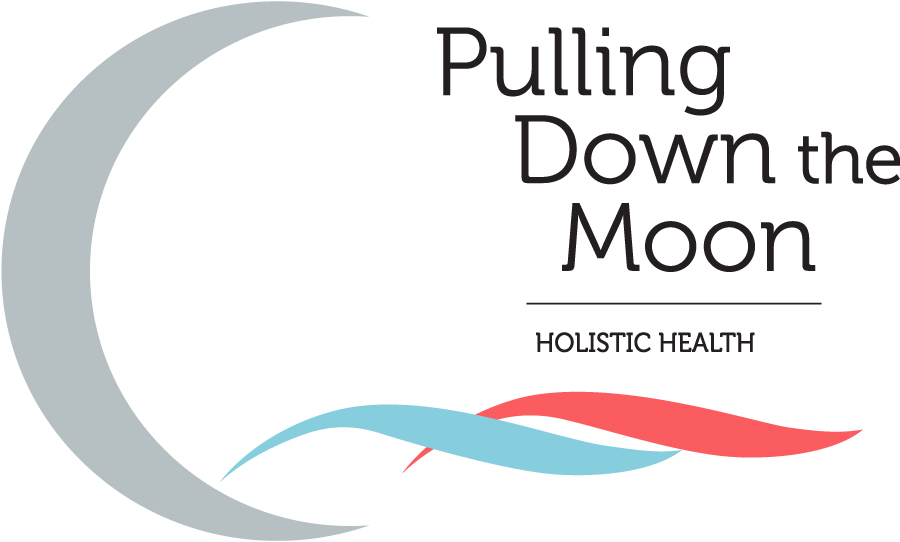Don't Forget to Pump Up the Blood!
This at-home 5-minute technique can improve your blood flow for better egg quality, uterine lining and more!
Oh Blood Flow, Oh Blood Flow, Wherefore Art Thou Blood flow? And Why Do We Care?
It’s February and Valentine’s Day is on the horizon. Is our mind filled with romance and love?
Nope. We’re thinking about blood flow. Why blood flow? Well, because improving blood flow to the pelvic area is one of the most important things women can do to improve their fertility, especially if they are over 37 years old.
For some time, research has pointed to ovarian blood flow as a predictor of
IVF success. One reason for this is the important role that blood plays in the delivery of gonadotropin hormones, nutrients and oxygen to the ovaries. Interestingly, ovarian blood flow declines with age.
Techniques like acupuncture, massage and yoga have all been shown to increase blood flow. In multiple studies, including this groundbreaking work by Sterner-Victorin, acupuncture has been shown to reduce blood flow impedance in the uterine arteries. Massage, too, seems to have an impact on uterine pulsatility index. While there are no studies as of yet looking at yoga and uterine blood flow, we do know that yoga impacts blood flow in several ways. The first is mechanically - by putting the body in positions that promote blood pooling in the abdominal area and by gently stretching muscles and connective tissue that may constrict blood flow. The second is through the activation of the Parasympathetic Nervous System (a.k.a. Relaxation Response) which shifts blood away from our large skeletal muscles towards our internal organs, most notably the organs of digestion and reproduction.
Blood is life. It brings oxygen, nutrients, hormones, and other elements necessary for life to continue—and to begin. We know that insufficient blood circulation to the uterus leads to a
thinner-than-normal endometrium, which can prevent the successful conception or implantation of an embryo. Learning how to increase blood flow to uterus tissues is a key component in bolstering the possibility of a successful pregnancy, from conception to delivery.
The Critical Role of Uterine Blood Flow in Conception
Healthy blood flow to the uterus, which can improve endometrial thickness, is one of the key markers used to measure how successful conception is likely to be.¹ A thin endometrium will be unable to support embryonic growth with the nutrients, oxygen, and other developmental factors necessary to spark a successful pregnancy. This is equally true for supporting attempts at natural conception, as well as IUI and IVF procedures. Good blood circulation to the uterus, however, can build a sufficiently healthy and thick endometrium that is more likely to support conception and pregnancy.
Understanding Uterine Blood Flow and Its Impact on Fertility
Finding out how to increase blood flow to uterus tissues helps boost the reproductive system’s ability to transport nutrients, oxygen, fluids, immune factors, proteins, and hormones effectively to create a fertile uterine ecosystem that can support a pregnancy. Without adequate blood flow, these tissues can’t support healthy embryonic growth and development.²
The Science Behind Blood Flow and Fertility
So, if you are struggling to get pregnant or carry a pregnancy to term, assessing your circulatory system and how well it is furnishing your reproductive organs, particularly the uterus, with the building blocks of life is an essential step in resolving any issues that might be hampering your efforts to conceive. In fact, one wide-ranging study about fertility and nutrition indicated that some of the critical nutrients needed for improving fertility played the specific role of increasing circulation to the uterus and ovaries, underscoring just how critical these circulatory functions are in making a baby.³
Factors that Affect Blood Flow to the Uterus
Several factors can impede adequate blood flow to the uterus. On the other hand, you can do several things to improve blood flow to uterus tissues. First, let’s talk about what might be hindering circulation in this area:
- Age: On average, fertility decreases after age 37, and one of the reasons is that ovarian and uterine blood flow declines around this time.
- Reproductive conditions: Hormonal imbalances like polycystic ovary syndrome (PCOS), hypothalamic dysfunction, endometriosis, scar tissue from surgeries or injuries, pelvic inflammatory disease from sexually transmitted diseases, polyps, tumors, and fibroids can all inhibit ideal blood circulation to the uterus.⁴
- Undiagnosed issues: if you’ve had every test under the sun, but uterine blood flow is still not optimal, and you don’t know why, trying holistic approaches such as nutrition, acupuncture, yoga, and massage therapy can still increase blood flow to uterus tissues, which can improve the chances of conception.
3 Proven Solutions to Increase Uterine Blood Flow
Regardless of your current condition, the holistic practices of yoga, acupuncture, and massage therapy provide nurturing, tangible, scientifically-based improvements in overall circulatory function, which can improve and increase blood flow to uterus linings and adjacent reproductive organs. Here’s what we know about how each one of those practices works:
1. Yoga for Fertility: Enhancing Circulation Through Movement
Movement is medicine and yoga is a gentle, ancient practice with scientific benefits for overall health and, specifically, for fertility. Studies show that practicing yoga is good for the cardiovascular system generally, lowering inflammation and blood pressure.⁵ Yoga has also been shown to specifically benefit women’s menstrual cycles by helping to balance hormones and improve uterine blood circulation.⁶ Targeted fertility yoga classes and pregnancy yoga practice have also shown improved blood flow to the uterus during pregnancy, which improved pregnancy outcomes.⁷
2. Acupuncture: Traditional Practice with Modern Benefits
Acupuncture is a 3000+ year-old Traditional Chinese Medicine (TCM) practice with considerable amounts of modern science to back it up. In the case of acupuncture and fertility, research indicates that a series of acupuncture sessions can help improve IVF success rates.⁸ Though more research is needed to determine the exact mechanisms behind the improvement, additional studies on acupuncture show that certain points can improve blood circulation in the body generally, which includes blood flow to the reproductive systems.⁹
3. Therapeutic Massage: Relaxation and Circulation
Therapeutic fertility-enhancing massage can also help improve circulation and fertility by reducing stress and bolstering circulation, especially in the abdominal areas. Recent research on massage and fertility demonstrated that targeted fertility massage could increase blood flow to uterus linings, which helped improve and regulate menstrual cycles.¹⁰ Pulling Down the Moon has expert fertility massage therapists who have researched and developed therapeutic massage techniques for each stage of a woman’s cycle.
Pulling Down the Moon: Your Partner on a Successful Fertility Journey
Learning how to increase blood flow to uterus tissues naturally and effectively is an important strategy for improving fertility. Pulling Down the Moon has an entire community of holistic fertility service experts in Chicago and Highland Park who understand how to help you with this specific fertility concern, as well as many others. Our fertility community is here to understand, cry with, and celebrate with you all along the way. We have partnered with thousands of women and men on their fertility journeys, and we will walk with you too. Schedule an appointment with us today.
References
¹Zhang, C.-H., Chen, C., Wang, J.-R., Wang, Y., Wen, S.-X., Cao, Y.-P., & Qian, W.-P. (2022). An endometrial receptivity scoring system basing on the endometrial thickness, volume, echo, peristalsis, and blood flow evaluated by ultrasonography. Frontiers in Endocrinology, 13, 907874. https://doi.org/10.3389/fendo.2022.907874
²Fournier, S., D’Errico, J., & Stapleton, P. (2021). Uterine Vascular Control Preconception and During Pregnancy. Comprehensive Physiology, 11(3), 1871–1893. https://doi.org/10.1002/cphy.c190015
³Skoracka, K., Ratajczak, A. E., Rychter, A. M., Dobrowolska, A., & Krela-Kaźmierczak, I. (2021). Female Fertility and the Nutritional Approach: The Most Essential Aspects. Advances in Nutrition, 12(6). https://doi.org/10.1093/advances/nmab068
⁴Mayo Clinic. (2021, August 27). Female infertility. Mayo Clinic. https://www.mayoclinic.org/diseases-conditions/female-infertility/symptoms-causes/syc-20354308
⁵Publishing, H. H. (2019, April 1). How Yoga May Enhance Heart Health. Harvard Health. https://www.health.harvard.edu/heart-health/how-yoga-may-enhance-heart-health
⁶Kanchibhotla, D., Subramanian, S., & Singh, D. (2023). Management of dysmenorrhea through yoga: A narrative review. Frontiers in Pain Research, 4. https://doi.org/10.3389/fpain.2023.1107669
⁷Bouya, S., Rezaie Keikhaie, L., Hosseini, S., & Rezaie Keikhaie, K. (2021). The effect of yoga on uterine artery Doppler indices, maternal and fetal complications in pregnant women: A quasi-experimental study. Journal of Ayurveda and Integrative Medicine, 12(1), 70–74. https://doi.org/10.1016/j.jaim.2020.07.003
⁸Guven, P. G., Cayir, Y., & Borekci, B. (2020). Effectiveness of acupuncture on pregnancy success rates for women undergoing in vitro fertilization: A randomized controlled trial. Taiwanese Journal of Obstetrics and Gynecology, 59(2), 282–286. https://doi.org/10.1016/j.tjog.2020.01.018
⁹Takayama, S., Watanabe, M., Kusuyama, H., Nagase, S., Seki, T., Nakazawa, T., & Yaegashi, N. (2012). Evaluation of the Effects of Acupuncture on Blood Flow in Humans with Ultrasound Color Doppler Imaging. Evidence-Based Complementary and Alternative Medicine, 2012, 1–8. https://doi.org/10.1155/2012/513638
¹⁰Chen. (2017). [Effect of massage on hemodynamics parameters of uterine artery and serum prostaglandin in treating patients with primary dysmenorrhea]. Zhongguo Zhong Xi Yi Jie He Za Zhi Zhongguo Zhongxiyi Jiehe Zazhi = Chinese Journal of Integrated Traditional and Western Medicine, 31(10). https://pubmed.ncbi.nlm.nih.gov/22097204/
Meet Meredith Nathan
View Profile: Director of Massage
Meredith Nathan, L.M.T., a distinguished graduate of Northwestern University and the Chicago School of Massage Therapy, holds certifications in various therapeutic techniques. In 2008, she created the Fertility Enhancing Massage (FEM) Protocol™, becoming an approved provider of Continuing Education in Fertility Massage in 2017. Meredith is committed to empowering individuals and families to achieve radiant health through a blend of holistic modalities grounded in modern science, reflecting her dedication to setting new standards of excellence in holistic fertility.
Share on Social
Discuss With Us
Our Latest Resources





